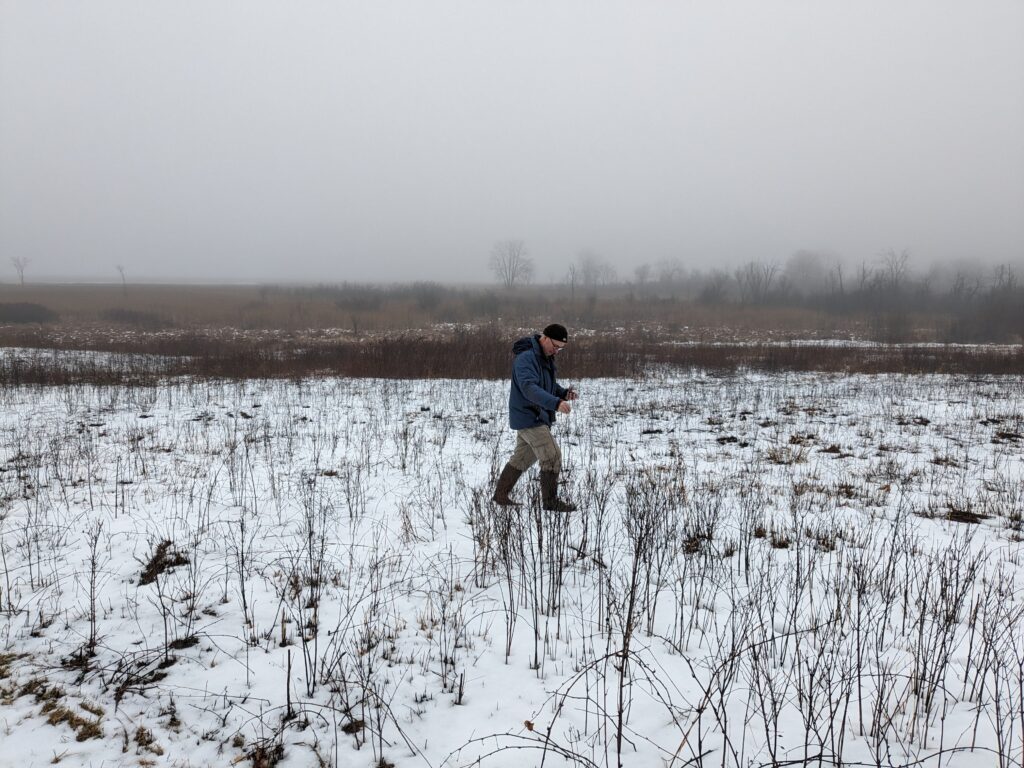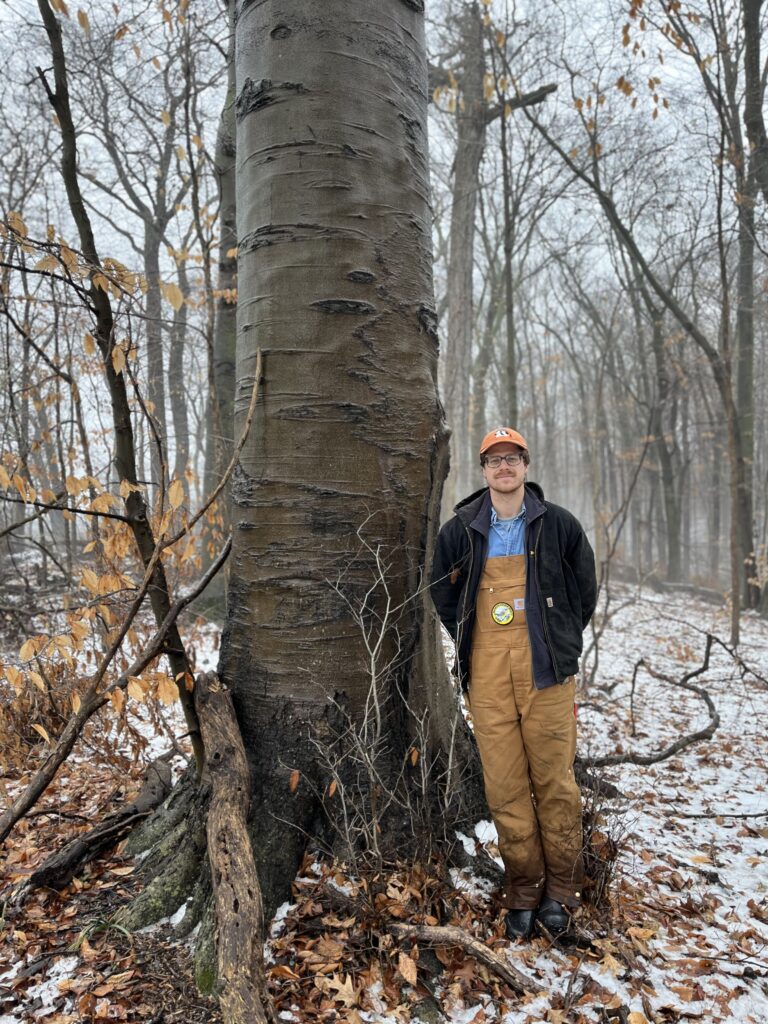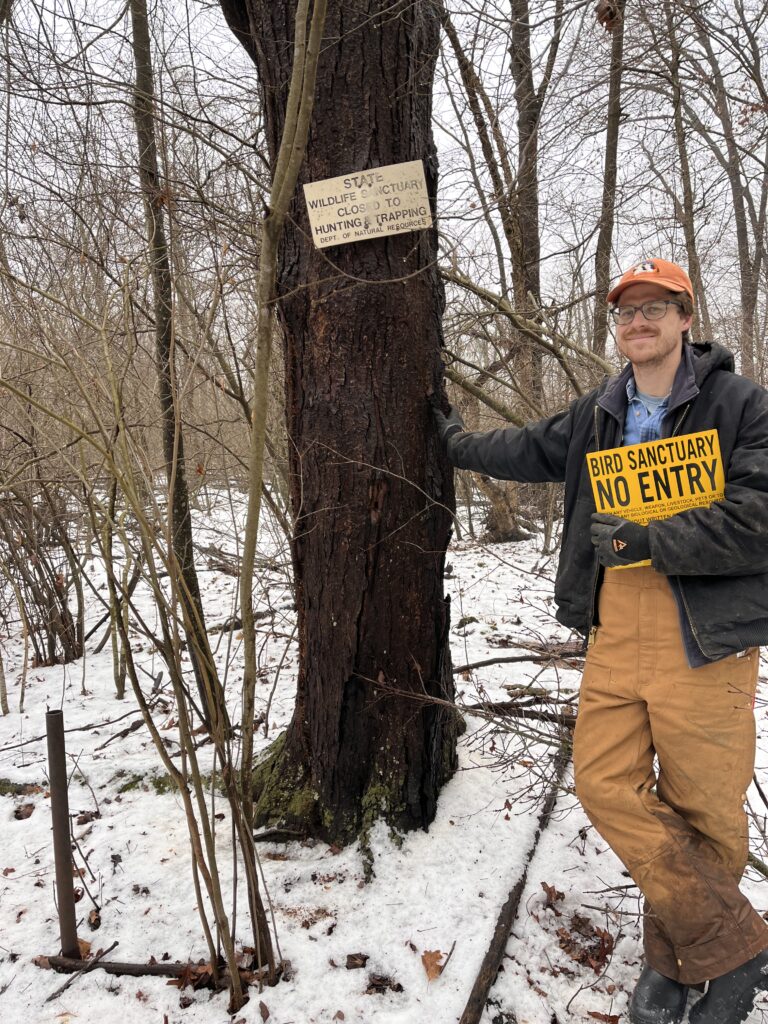Conservation Manager Chad Machinski, M.S., joined the Michigan Audubon team in March and has made great progress in reviving the stewardship of MA’s sanctuaries and engaging with our dedicated volunteers ever since. To help you stay connected with the work being done, he will be presenting regular online updates about activities going on at them: birds seen or heard, conservation work, improvements, interesting plants, and more.
While the weather seems to have thwarted several of my scheduled days in the field, conservation work carries on those few days I’ve successfully gotten out and also on the days in the office.
MARTHA MOTT SANCTUARY
Days after a significant snowstorm, we were scheduled to have a volunteer workday out at our Martha Mott Sanctuary. Unfortunately, the workday was ultimately canceled due to the snow that remained on the ground, which would have made it difficult for volunteers to work and even park in the parking lot. Despite this, I headed out to Mott because I was desperate to get out into the field for the first time in the new year. Although the site was snow-covered, it was still apparent how much work our volunteers put in on the workdays when I was not present. Under the volunteer leadership of David Riggs, our crew has cleared a significant amount of autumn olive from the more open areas of the site. By the time this blog is posted, another workday will have happened, and even more autumn olive will have been cleared as we slowly reach towards our goal of restoring Mott to an Oak Savanna.

Haehnle Sanctuary 1/25/2024. Steve Jerant spreading common milkweed seeds in Unit 1.03.1. Photo by Chad Machinski
PHYLLIS HAEHNLE MEMORIAL SANCTUARY
A week later, the snow was still lingering as Steve Jerant (Haehnle Committee Chair) and I were mapping areas of the Phyllis Haehnle Memorial Sanctuary to be brush mowed. Like Mott, the Haehnle Sanctuary historically would have had several areas of Oak Savanna/Barren. Due in part to being awarded a grant from the DNR’s Wildlife Habitat Grant Program through the American Bird Conservancy, we will be working on restoring several acres of Haehnle to Oak Savanna. This will involve brush hogging through areas where black locust, buckthorn, honeysuckle, and boxelder have popped up after prior efforts to remove them via manual removal.
Steve and I would move on to sowing seeds in the section of prairie that was burned this past fall. Common milkweed and wild bergamot were two of the many species collected by volunteers last fall at Haehnle. Once these seeds were cleaned of fluff and chaff, they went back onto the grounds. Winter may seem like an odd time to sow seeds, but most of our seeds require a period of cold stratification, and while I don’t mind having the seeds take up an entire drawer in my refrigerator, I think having nature do the work is the better option.

Haehnle Sanctuary 1/25/2024. Chad Machinski posing next to large beech tree (Fagus grandifolia), which sits upon a ridge on the east side of the sanctuary in Unit 4.24. The ridge overlooks Mud Lake and is inaccessible to the public. A very beautiful upland forest. Photo by Steve Jerant

Haehnle Sanctuary 1/25/2024. Steve Jerant standing next to his favorite tree, the tulip tree (Liriodendron tulipifera) in Unit 4.24 on upland "island" while marking property boundary. Photo by Chad Machinski

Haehnle Sanctuary 1/25/2024. Chad Machinksi holding newer boundary sign while posing next to old boundary signs in Unit 6.05. Photo by Steve Jerant
With the rest of the day at our disposal, Steve and I remarked a section of the sanctuary’s property boundary. This offers an opportunity to make sure there isn’t any illegal activity happening along our boundary and to make sure that people are aware that they are entering sanctuary land. It’s always a bit of an adventure checking property boundaries as you are usually in areas that are never seen by visitors and rarely seen by staff or volunteers. As we walked through a section of Southern Hardwood Swamp, flocks of goldfinches chipped overhead as they flew from yellow birch to yellow birch, feasting on their seeds. We eventually reached an upland “island” with immense beeches, oaks, and tulip trees. Steve and I took some time to enjoy the beauty of this remote forest that infrequently sees people before making our trek back.

Adult male Purple Martin. Photo by Karen Brown
PURPLE MARTIN CONSERVATION
While the field component of my work is the most exciting, office work and meetings often yield thrilling results. Manager of Education and Events Lindsay Cain and I met with Purple Martin landlord aficionado Penny Briscoe to figure out how we at Michigan Audubon can continue the organization’s previous work with Purple Martins in Michigan. We will be updating our Purple Martin colony registration form and map, developing a county mentor program, and working on hosting a gathering for Purple Martin landlords. We are excited to move forward with this program that ensures the continued existence of a bird that is so intertwined with humans. Please watch our Purple Martin Conservation webpage to see updates!
To learn more about Michigan Audubon sanctuaries, visit michiganaudubon.org/conservation/bird-sanctuaries. If you want to volunteer at a Michigan Audubon sanctuary, please complete the Sanctuary Volunteer Interest Form.

Chad Machinski, MS
Conservation Manager
While Chad’s first love is botany, he doesn’t deny the intertwining nature of birds, plants, insects, and all other organisms we share the world with. His passion for the natural world began in his undergraduate time at the University of Michigan, taking several different forms along the way. His graduate studies at the University of Michigan allowed him to more closely examine the natural communities of Michigan and further understand the complex nature of ecosystems. His work as a Nichols Arboretum Caretaker while in school further enabled him to be directly involved in conservation work as he led workdays removing invasive plant species, performed trail maintenance, and guided tours. Chad can usually be found out in a park in a few ways: binoculars glued to his face, hunched over looking at plants, or flipping logs looking for snakes and salamanders.

